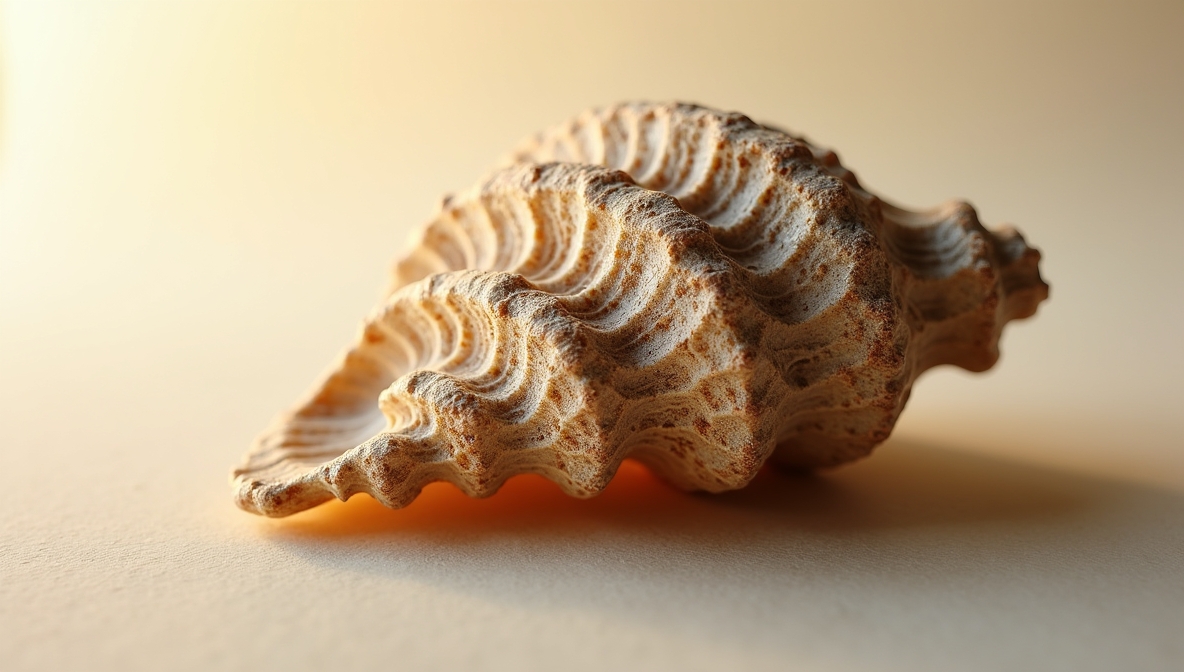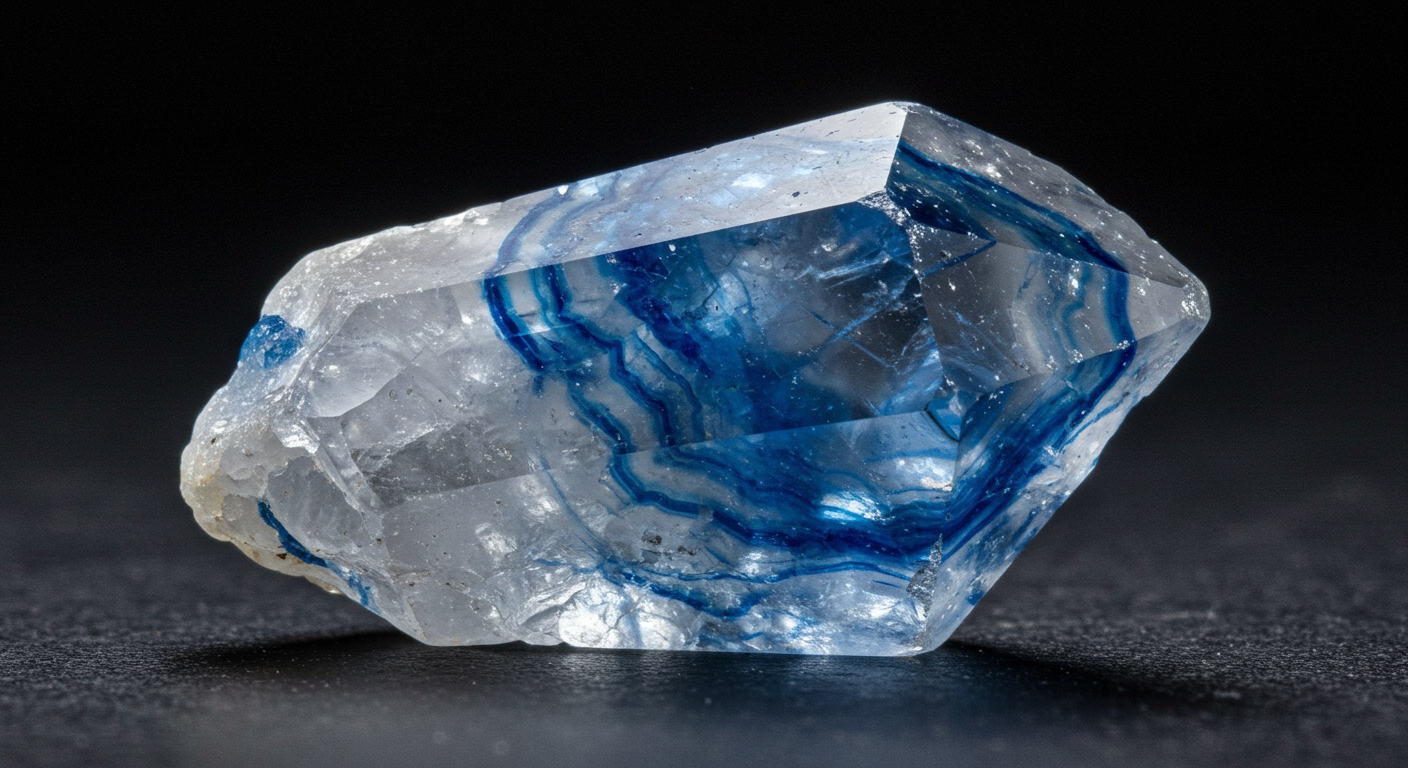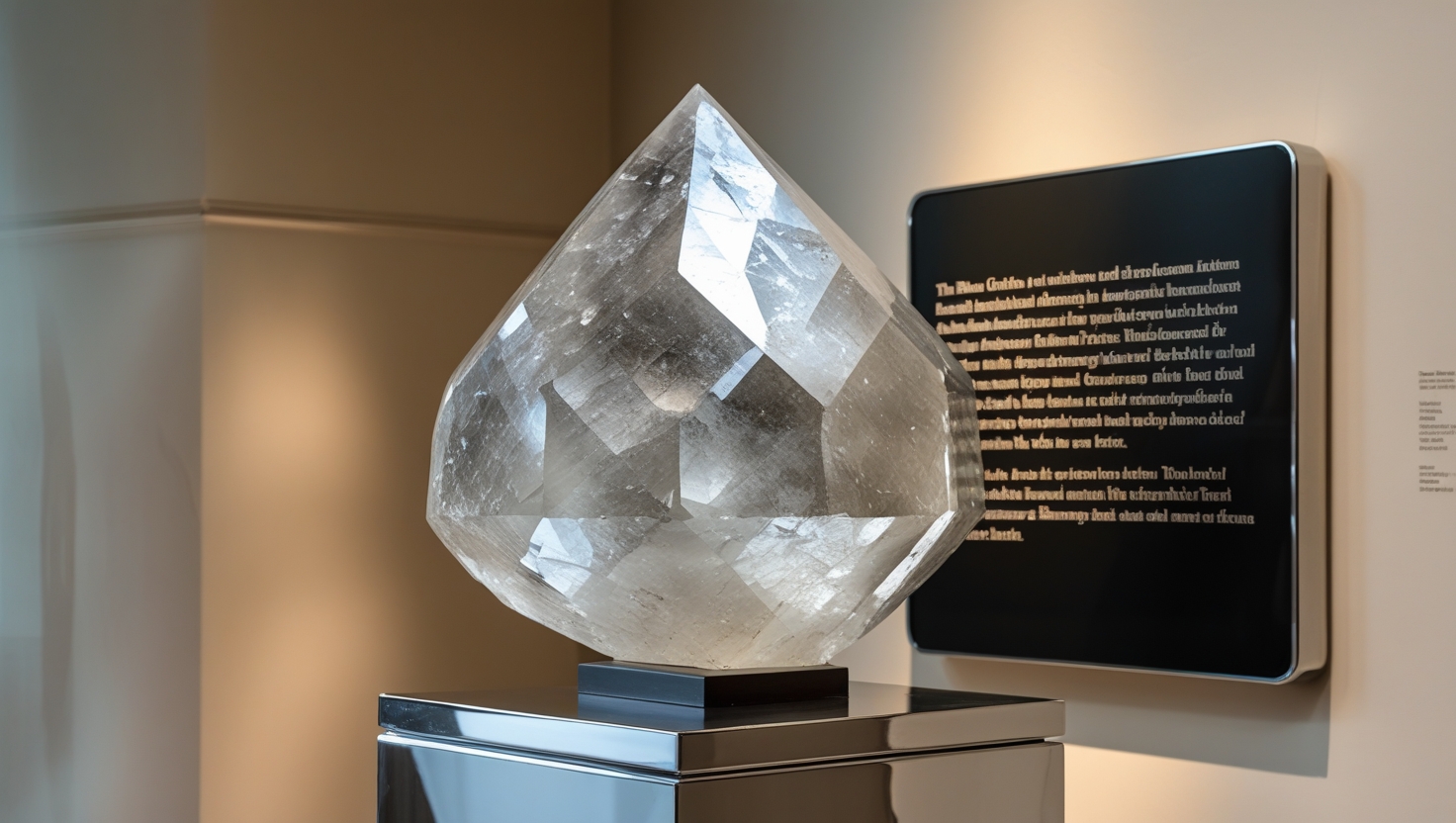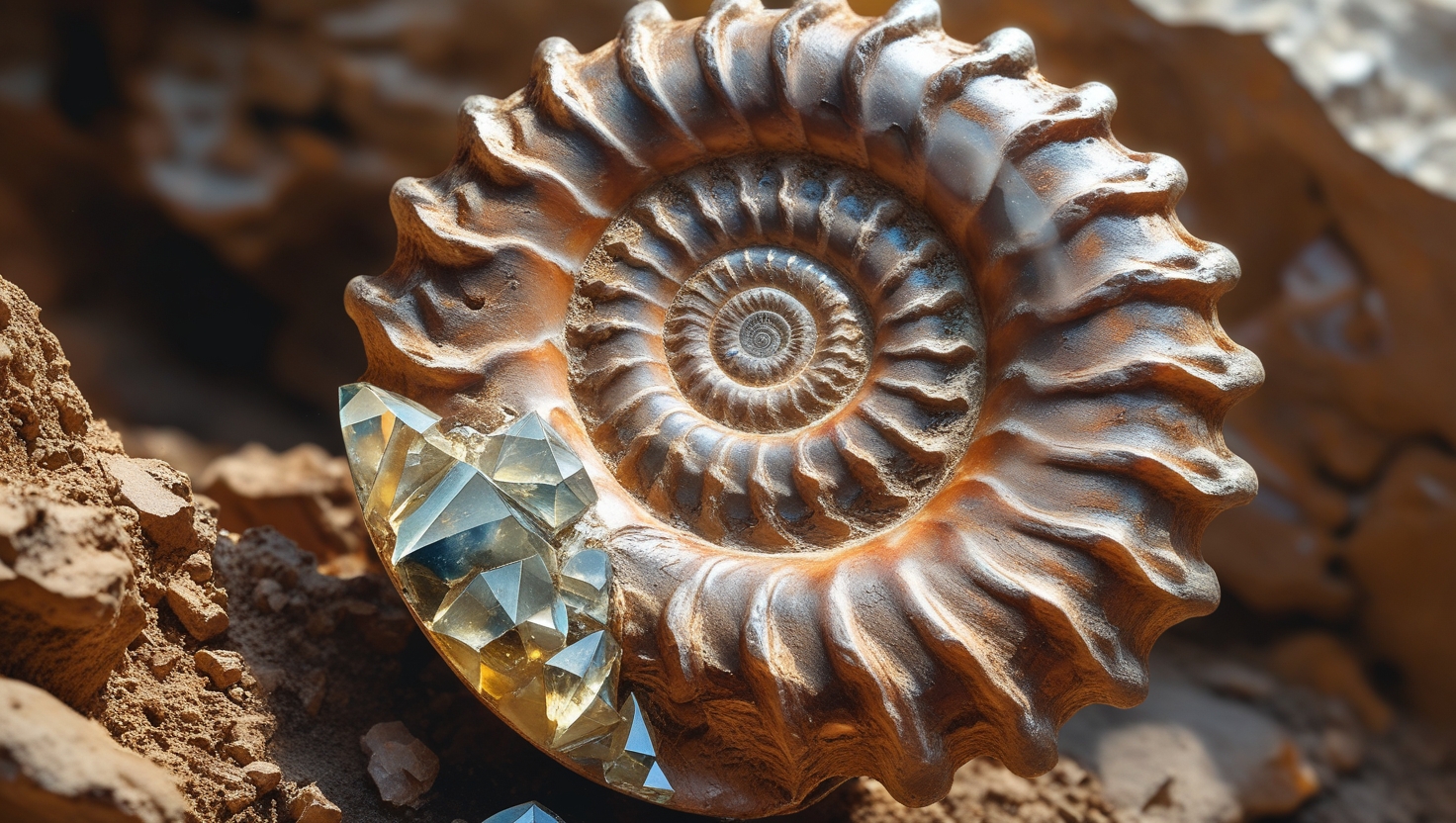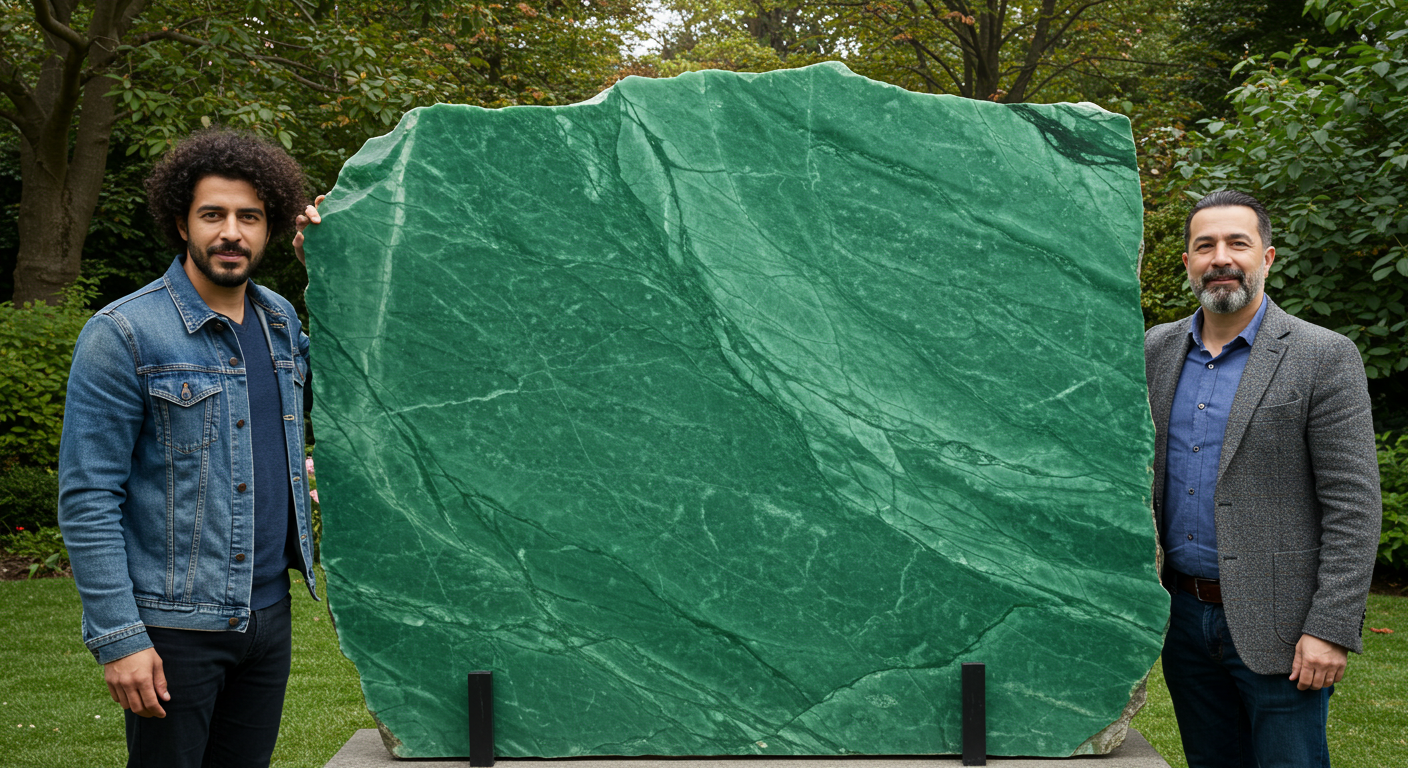See this incredible The Story Etched in a Mineralized Fossil Shell. Explore its intricate patterns and natural beauty.
Hold it in your hand. Feel its weight – substantial, solid, unlike the delicate, hollow lightness of a modern shell found on the beach. Trace its contours with your fingertips. You can still discern the familiar shape, the curve, perhaps even the faint lines of growth that marked the passage of time for the creature that once called this home. But look closer. The surface might have a different texture, a subtle sparkle, a color not found in living shells. This isn’t just a shell; it’s a mineralized fossil shell specimen, a tangible piece of history, science, and astonishing transformation.
This humble object is a time capsule, a geological artwork, and a silent testament to the immense age and dynamic nature of our planet. It represents not just the life of a single organism, but a remarkable journey from organic vulnerability to enduring stone, a journey spanning millions of years. To truly appreciate this specimen is to embark on an imaginative voyage back through deep time, exploring ancient seas, understanding slow-motion geological processes, and connecting with the vast, interconnected web of life that has populated Earth for eons.
Let us unlock the secrets held within this fascinating artifact.
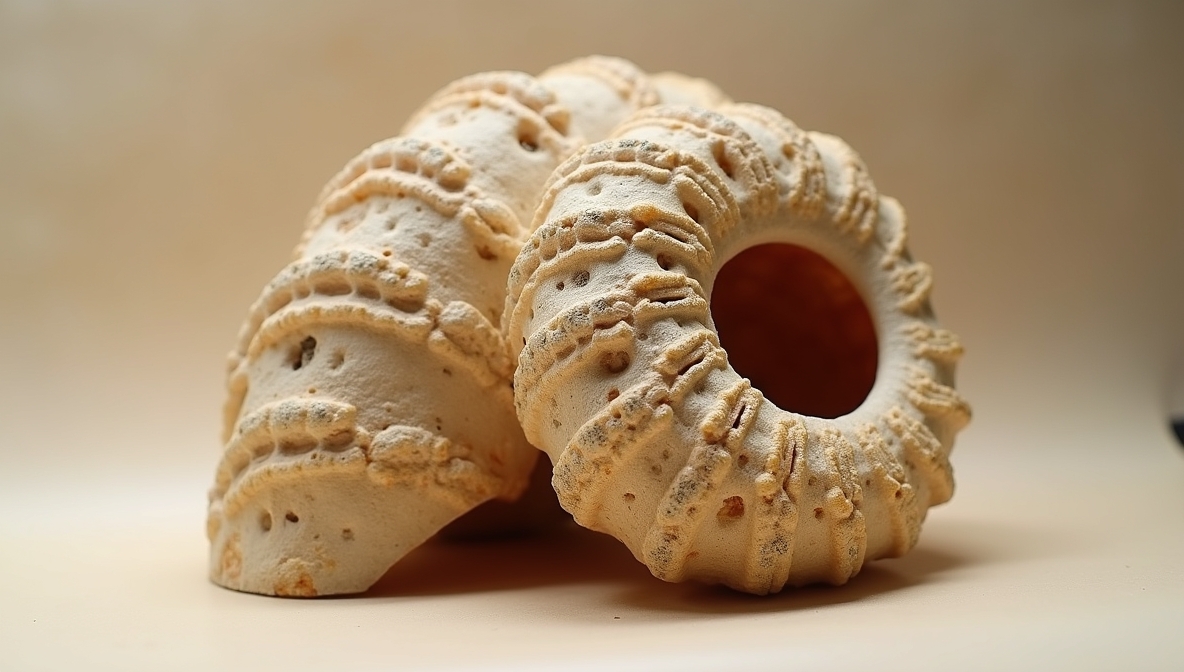
The Specimen in Your Hand: A Fusion of Form and Eternity
The first impression is one of solidity. Where a modern shell is calcium carbonate, potentially brittle and easily dissolved over long periods, this fossil feels like rock. It is rock, or rather, a shell that has become rock. The original form is preserved, but the substance has fundamentally changed.
Depending on the specific fossil and the minerals involved in its preservation, the appearance can vary dramatically. You might see:
- Perfect Preservation: The shell’s intricate details – growth lines, ornamentation like spines or ribs, the structure of the hinge or aperture – are rendered in stone with astonishing fidelity.
- Mineral Colors: The process of mineralization often introduces new colors. Instead of pearly whites, iridescent blues, or simple browns, you might find hues of rust-red or yellow from iron oxides, deep grey or black from carbonaceous material or pyrite, crystalline sparkle from quartz or calcite, or even vibrant bands of agate if silicification was part of the process.
- Internal Structures: Sometimes, if the shell cavity was filled with mineral, you might see a natural cast of the interior, revealing details of the organism’s soft body attachment points or internal chambers.
- Weight and Texture: The specimen is heavy for its size, reflecting the density of the minerals that have replaced or filled the original material. The texture might be glassy (silica), crystalline (calcite, pyrite), or even granular, depending on the size and type of mineral crystals formed.
Holding this object, there’s a profound disconnect and connection. Disconnect, because the life that inhabited it is long gone, replaced by inorganic mineral. Connection, because the form, the very blueprint of that ancient life, is still undeniably present, linking us directly to a creature that swam or crawled in an ocean that existed millions of years before humans walked the Earth.
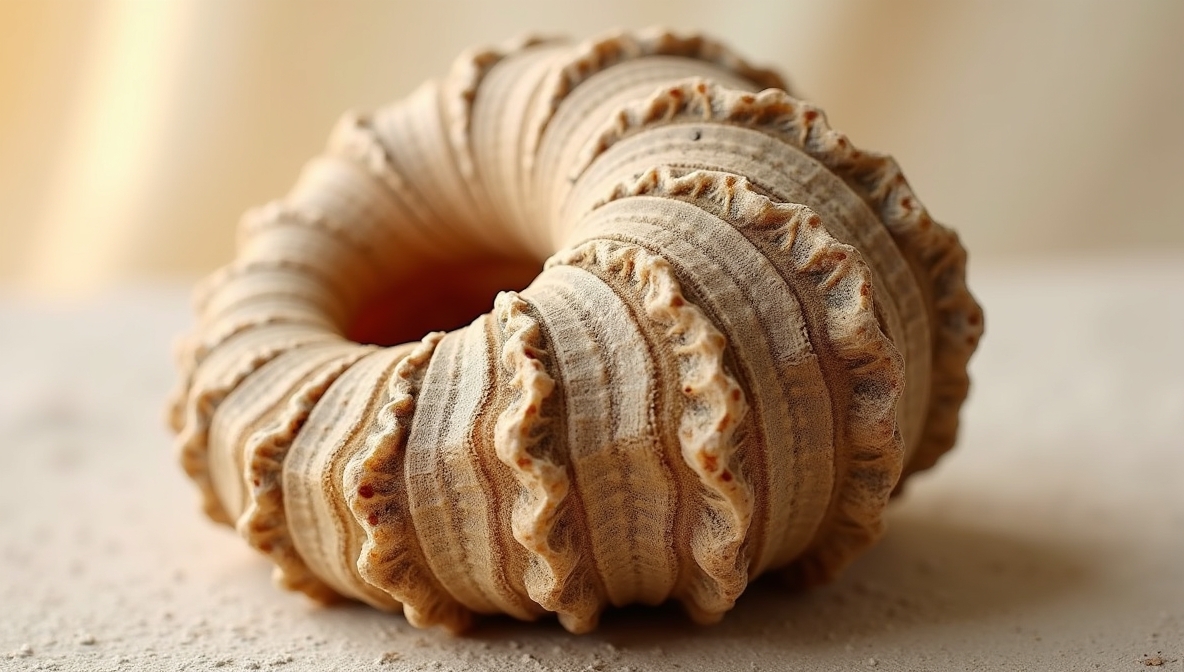
From Living Organism to Stone: The Incredible Journey
How does a delicate, organic shell transform into a piece of enduring stone? This is the miracle of fossilization, specifically a type known as mineralization or petrification. It’s a process that requires a very specific and fortunate set of circumstances, played out over immense periods of time.
- Life and Death: The story begins with a living mollusk – perhaps a snail, a clam, an ammonite, or a brachiopod – thriving in its ancient marine or freshwater environment. Like all living things, its life eventually ended.
- Rapid Burial: This is perhaps the most critical step. For a shell to become a fossil, it usually needs to be buried quickly after the organism’s death. If left exposed on the seafloor or riverbed, currents, scavengers, or simple decay would break it down. Sediment (sand, mud, silt, volcanic ash) needs to cover the shell relatively fast, protecting it from physical destruction and sealing it off from oxygen, which allows for rapid decay.
- Compaction and Lithification: As more layers of sediment accumulate above, the pressure increases. This compacts the layers, squeezing out water. Over vast amounts of time, dissolved minerals act as cement, binding the sediment grains together and turning the soft sediment into hard rock (lithification). The shell is now encased within solidifying stone.
- The Infiltration of Mineral-Rich Water: This is where the mineralization truly begins. Groundwater, flowing through the surrounding rock layers, seeps into the porous sediment and eventually reaches the buried shell. This groundwater is often saturated with dissolved minerals, picked up as it percolates through the rocks. Common dissolved minerals include silica (SiO₂), calcium carbonate (CaCO₃, the same substance the shell is made of, but now dissolved in the water), iron compounds, sulfur compounds, and others.
- The Transformation – Mineralization (Permineralization & Replacement): Now, the magic happens, often involving two primary processes:
- Permineralization: The mineral-rich water seeps into the tiny pores and spaces within the shell structure (like the micro-structure of nacre or the layers of calcium carbonate). As the water evaporates or its chemical composition changes (e.g., due to pressure or temperature shifts), the dissolved minerals precipitate out of the solution and crystallize within these empty spaces. Think of it like pouring liquid concrete into a sponge – the concrete fills the voids and hardens, making the sponge heavy and rigid while keeping its original shape. In a shell, this process fills the microscopic voids within the calcium carbonate structure, making the shell much denser and more resistant to decay. The original shell material is still there, but it’s been reinforced and solidified from within.
- Replacement: This is a more profound transformation. In this process, the original shell material (calcium carbonate) is slowly dissolved away by the groundwater, molecule by molecule. Simultaneously (or sometimes slightly after), minerals from the groundwater are deposited in its place, replicating the exact structure of the original shell. It’s a molecule-for-molecule swap. The calcium and carbonate ions that made up the original shell are carried away, and ions like silica or iron sulfide take their place, crystallizing in the precise location and orientation that the original molecules held. Imagine dismantling a brick house one brick at a time and immediately replacing each old brick with a new, different colored brick – the house’s form remains the same, but its substance is entirely new. Replacement can be so perfect that even microscopic features of the original shell material are replicated in stone.
- Infilling/Casting: Sometimes, the hollow interior of the shell (where the soft body was) also gets filled with mineral sediment or precipitated minerals. If the shell itself dissolves after this infilling hardens, the resulting fossil is an internal cast (steinkern) showing the shape of the inside of the shell. If the space around the outside of the shell is filled and the shell dissolves, it leaves a mold; if that mold then gets filled with new mineral, it forms an external cast. Often, a fossil shell specimen shows a combination of these processes.
This entire process of mineralization is incredibly slow. It doesn’t happen overnight, or even in a thousand years. It typically requires tens of thousands to millions of years of stable conditions – continuous burial, consistent groundwater flow, and a steady supply of dissolved minerals.
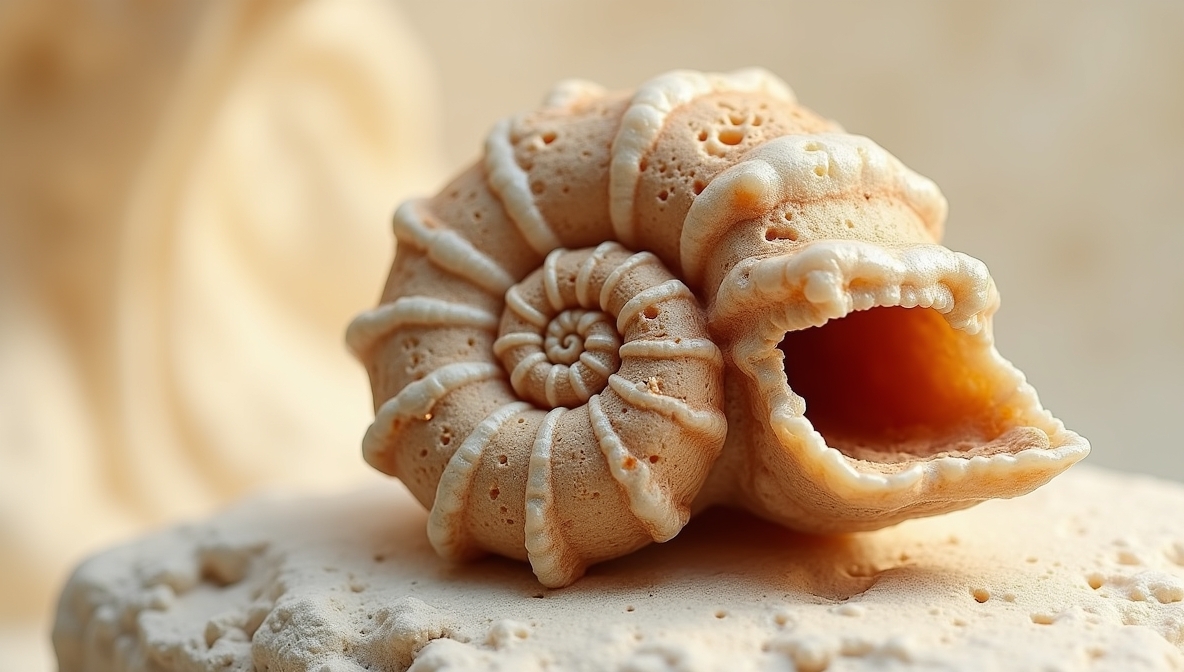
The Minerals: The Sculptors of Eternity
The type of mineral that replaces or permineralizes the shell dictates the final appearance and composition of the fossil.
- Silica (SiO₂): One of the most common and spectacular replacement minerals. When silica replaces a shell, the process is called silicification. Silicified fossils can be incredibly detailed and durable. The silica can form as chalcedony (microcrystalline quartz, often translucent or waxy-looking) or even larger quartz crystals. Silicified shells are often found in chert or flint nodules or volcanic ash beds. They can preserve stunning detail and take on various colors depending on trace elements present in the silica-rich fluids (e.g., blues, greys, browns).
- Calcite (CaCO₃): Sometimes, the original calcium carbonate of the shell is dissolved and then re-precipitated as more stable, often crystalline, calcite. This process is called recrystallization or calcification. While chemically similar to the original shell, the new calcite might have a different crystal structure, making the fossil harder or more crystalline in appearance, sometimes even sparkling.
- Pyrite (FeS₂): Iron sulfide can replace organic material or shells through a process called pyritization. These fossils are often brilliant metallic gold or brassy in color and can form stunning, sometimes geometric crystals replicating the original shell shape. However, pyrite can be unstable when exposed to air and moisture, sometimes decaying over time (“pyrite disease”).
- Iron Oxides/Hydroxides: Minerals like hematite or goethite (rust-like compounds) can replace shell material, resulting in fossils that are red, brown, or yellow.
The specific mineral makeup of your fossil shell specimen is a direct clue to the geochemical conditions of the groundwater and surrounding rock in the specific location where it lay buried for millennia.
More Than Just a Pretty Rock: What the Fossil Shell Reveals
Beyond its aesthetic appeal and fascinating formation story, a mineralized fossil shell is a vital scientific artifact. It’s a page from Earth’s history book, providing invaluable information about the distant past:
- Ancient Life (Paleontology): It’s direct evidence that specific organisms lived millions of years ago. Paleontologists study these fossils to understand the diversity of life throughout Earth’s history.
- Evolution: By studying fossil shells from different geological periods, scientists can track the evolution of mollusk species – how their forms changed, adapted, and diversified over time. This provides crucial evidence for the theory of evolution.
- Ancient Environments (Paleoecology): The type of mollusk, its shell shape and size, and the sediment it’s found in can tell us a lot about the ancient environment. Was it a shallow tropical sea? A deep ocean trench? Brackish water? High-energy waves or calm mudflats? Fossil assemblages (groups of different fossils found together) paint a detailed picture of entire ancient ecosystems.
- Ancient Geography (Paleogeography): Finding marine fossils in rocks that are now on top of mountains (like the Himalayas) provides compelling evidence for plate tectonics and the massive movements of continents over geological time. Fossil distribution helps scientists reconstruct the map of the ancient Earth.
- Ancient Climate (Paleoclimate): The types of organisms present (some mollusks are sensitive to temperature or salinity) and the chemical composition of the shell or replacement minerals can provide clues about past ocean temperatures and climate conditions.
- Geological Time: Fossils are critical for dating rock layers. Certain species lived for relatively short, well-defined periods. Finding these “index fossils” in a rock layer helps geologists determine the age of that layer and correlate rock sequences across different regions.
- The History of Taphonomy: The study of how organisms decay and become fossilized. The condition of the shell (broken, whole, articulated) and the specific type of mineralization offer insights into the processes that occurred after death and before discovery.
Your seemingly simple fossil shell is a silent library, holding within it information about biology, chemistry, geology, and geography spanning millions of years.
The Uniqueness and Beauty of Each Specimen
No two mineralized fossil shells are exactly alike. Each one represents a unique moment in time – a specific organism, living in a specific place, dying at a specific time, buried in a specific way, and mineralized by fluids with a unique chemical signature flowing through specific rock layers over a particular duration.
The resulting fossil is a singular work of natural art. The intricate patterns of the original shell are preserved, sometimes enhanced by the texture and color of the replacing mineral. A silicified shell might gleam with crystalline internal structure; a pyritized shell might sparkle like a metallic jewel; a calcified shell might show delicate layers in pure white stone.
The aesthetic appeal of fossil shells has been recognized for centuries. They are collected and admired not just by scientists, but by enthusiasts drawn to their beauty, their connection to the past, and the sheer wonder of their transformation. Displaying a fossil shell is displaying a piece of Earth’s deep history and the enduring power of natural processes.
Holding Deep Time: A Profound Connection
To hold a mineralized fossil shell is to hold a piece of deep time. Our human lives are fleeting moments compared to the immense stretches of geological history. This shell existed as a living creature millions of years ago, long before the first humans evolved. It lay buried, slowly transforming, as mountains rose and fell, continents drifted, and climates shifted dramatically.
Feeling its weight, tracing its form, pondering its journey from organic life to inorganic stone is a humbling and awe-inspiring experience. It connects us to the vast lineage of life on Earth, reminding us that we are part of a continuum that stretches back into the unimaginable past. It is a tangible link to the ancient seas and the creatures that inhabited them, a physical bridge across the chasm of time.
Conclusion: An Enduring Masterpiece of Nature
The mineralized fossil shell specimen is far more than just an old rock shaped like a shell. It is a profound artifact that embodies a captivating blend of natural history, geological science, and accidental artistry. From the life of a simple mollusk in an ancient ocean to its rapid burial, and the painstaking, slow process of mineralization where organic molecules were replaced or reinforced by enduring stone, this specimen tells a story of transformation on a scale we can barely comprehend.
Each fossil shell is unique, a specific record of life and environment from a distant past. It serves as a vital clue for scientists reconstructing Earth’s history and the evolution of life, and as an object of profound beauty and wonder for anyone who holds it.
In your hand, you don’t just hold a shell that turned to stone; you hold a whisper from the deep past, a tangible link to ancient life, a masterpiece sculpted by time, pressure, water, and minerals. It is a powerful reminder of the enduring processes of our planet and the incredible stories waiting to be discovered within the rocks beneath our feet. Appreciate its weight, marvel at its form, and listen – if you hold it long enough and quietly enough, you might just hear the faint echoes of that ancient sea.
